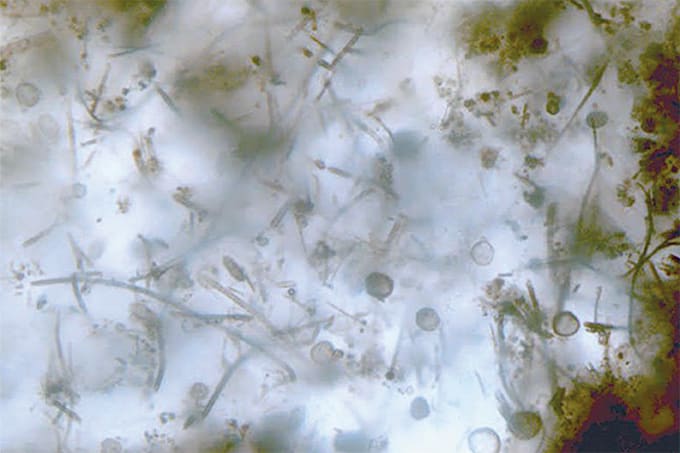The misuse of explosive materials by criminals and terrorist groups threatens public safety in all countries. In previous decades, there have been thousands of bombings around the world using improvised explosive devices (IEDs) – and Western cities, such as Brussels, Boston, Madrid, and London, have not been immune. The sole purpose of IEDs is to hurt and kill innocent people – changing the lives of the victims and their loved ones within a fraction of a second. Smokeless powders (SPs) are used as their main explosive material in 10 to 20 percent of all IEDs. SPs are energetic materials used as propellant in ammunition, as well as in pipe bombs and pressure cooker IEDs. Over 10 million pounds of SPs are produced each year and sold without restrictions – causing serious problems.
Often in IED cases, highly discriminative evidence, such as DNA or fingerprints is absent, which makes chemical profiling of SPs one of the only forensic options available to help the investigating authorities find a link between the offense and offender. The more characteristic features included in the chemical profiling, the more discriminative the results will be. When these characteristics are independent, their evidential value in the forensic comparison can be multiplied.

Currently, the chemical profiling of smokeless powders is centered around identifying and comparing the additive composition of two SP samples. The additive composition is determined in a qualitative and quantitative manner using GC-MS or LC-MS. The additives present in SPs are mostly stabilizers, deterrents, plasticizers, and flash inhibitors, added by the manufacturer to improve the SP performance. Manufacturers often keep their additive mixture a secret, but tend not to change it much over time once they are happy with the performance. This makes the additive profiles between SP samples originating from different manufacturers very distinctive, but the profiles originating from the same manufacturer can be difficult to tell apart.
Nitrocellulose (NC) is the main component in all smokeless powders. Until recently, NC had been largely ignored – as the elephant in the room – because it was too complex to analyze for chemical profiling purposes. NC is a high-molar-mass polymer that is produced by the nitration of plant-based cellulose using nitric acid and concentrated sulfuric acid. Recent research in our group by Rick van den Hurk has shown for the first time that SPs can be differentiated based on their molecular-weight distribution (MWD) using size-exclusion chromatography (SEC). In contrast to additive composition, MWD varies significantly between SP samples from the same manufacturer; for each production round a new batch of cellulose can be obtained from a variety of suppliers.
The degree of nitration of NC in SPs differs between 2.32 and 2.76 with batch-to-batch variation, due to slight differences in reaction conditions during production. This variation could make the degree of nitration of NC a good characteristic to include in the chemical profiling of SPs. The current method to determine the degree of nitration of NC in SPs uses a multistep solvent extraction, followed by an alkaline hydrolysis, and ion-exchange or CE separation. The total analysis time of this method is roughly three hours, requiring intensive manual labor and at least 20 mg of SP. No research on the potential of using the degree of nitration of SP-samples for a forensic comparison has been performed.
With this in mind, I set out to develop a quick and accurate method that could differentiate SP samples based on their degree of nitration. The aim was to develop something application focused, which could be widely adopted by the forensic field. That meant placing a high premium on accuracy and precision, while reducing analysis time, equipment cost, and the degree of manual labor required.
By combining SEC, alkaline hydrolysis, and an ion-exchange separation, we determined the degree of nitration in real SP samples. Pair-wise statistical comparison demonstrated that 80 percent of the SP sample set could be differentiated with statistical significance solely based on the degree of nitration. The total analysis time was only 12 minutes and required minimal sample preparation taking less than five minutes. A publication is in progress.
I hope that as a result of our work, determining the degree of nitration of NC will become standard practice in the forensic field when there is the need to chemically profile and compare SP samples. We are not trying to replace assessments of the additive composition or MWD but rather to introduce an additional independent parameter to refine understanding in forensic comparisons. Given that the MWD, additive composition, and the complete degree of nitration of NC are not dependent on each other, the overall evidential value of the individual features can be multiplied.
In our research, we observed that aging and different storage conditions can influence the chemical profile of the SPs. The effect of different storage conditions can present an opportunity, because SP samples originating from the same batch can, after a certain amount of time, be differentiated based on their chemical profile; but this also brings risk – storage can increase the chance of false negative results. For example, a SP-based IED stored in a humid environment might obtain a different chemical profile to the SP stock stored in a dry garage. The effect of aging and different storage conditions should be investigated before it can be applied in an actual forensic comparison and finally make its way to court.
The chemical profiling of SPs might not be able to prevent the production and usage of IED-based SPs. However, it can help identify those persons responsible and possibly prevent future attacks.




